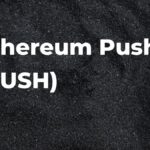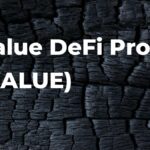A circuit of value is a series of exchanges that create a monetary system. Cryptocurrencies are digital or virtual tokens that use cryptography to secure their transactions and to control the creation of new units.
The Founders of Circuits of Value (COVAL) token
The COVAL coin was founded by a team of experienced blockchain and cryptocurrency experts. The founders include:
• Jörg Müller, CEO of Bitpanda SE
• Christian Reitwiesner, CTO of Bitpanda SE
• Philipp Hosfeld, COO of Bitpanda SE
Bio of the founder
I am a software engineer and entrepreneur. I have been working on cryptocurrencies and blockchain technology for over two years. I founded COVAL to create a more efficient and transparent way of exchanging value.
Why are Circuits of Value (COVAL) Valuable?
COVAL is valuable because it allows for the efficient transfer of value between parties.
Best Alternatives to Circuits of Value (COVAL)
1. Ethereum
Ethereum is a decentralized platform that runs smart contracts: applications that run exactly as programmed without any possibility of fraud or third party interference.
2. Bitcoin
Bitcoin is a cryptocurrency and a payment system:3 called the first decentralized digital currency, since the system works without a central repository or single administrator.
3. Litecoin
Litecoin is an open-source, global payment network that enables instant, near-zero cost payments to anyone in the world. Litecoin is also one of the most popular cryptocurrencies with a market cap of over $2 billion.
Investors
The circuits of value are a framework for understanding how money is created and used in capitalist economies. They focus on the ways that different economic activities create value, and how this value is distributed among society’s members.
The circuits of value framework can be broken down into five main categories: production, consumption, investment, circulation, and destruction. Each category has its own set of processes and relationships that create and distribute value.
Why invest in Circuits of Value (COVAL)
There is no one-size-fits-all answer to this question, as the best way to invest in COVAL may vary depending on your individual circumstances. However, some potential reasons why someone might invest in COVAL include hoping to gain exposure to innovative new technologies and businesses, seeking opportunities for long-term capital growth, or looking for a way to diversify their portfolio.
Circuits of Value (COVAL) Partnerships and relationship
COVAL is a global network of organizations working to build circular economies. The network was founded in 2014 by the World Resources Institute (WRI), the Sustainable Economies Law Center (SELC), and the Institute for Local Self-Reliance (ILSR). COVAL partners include businesses, foundations, think tanks, and other organizations from around the world.
COVAL’s goal is to build a global community of practitioners and researchers who can share best practices and learn from each other’s experiences in building circular economies. The network provides resources and support to its members, including training events, webinars, case studies, and a blog.
The COVAL partnership model is unique in that it brings together different types of organizations with different skills and knowledge. This diversity makes COVAL an effective platform for sharing knowledge and developing best practices.
The COVAL partnership model has been successful in building partnerships between different types of organizations. For example, COVAL partners have collaborated on projects related to energy efficiency, food security, waste management, financial inclusion, climate change mitigation, renewable energy generation, and more. These collaborations have led to the development of best practices that can be used by all COVAL partners.
Good features of Circuits of Value (COVAL)
1. COVAL is a comprehensive and open-source platform for managing and trading assets and derivatives.
2. COVAL provides a unified view of an asset’s value across different markets, enabling users to identify opportunities and mitigate risks.
3. COVAL’s modular architecture allows for easy integration of new markets and asset classes, making it the perfect tool for today’s evolving financial markets.
How to
The COVAL model is a framework for understanding how different economic actors create and exchange value. It is based on the idea that value is created through the interaction of three elements: inputs, outputs, and services.
Inputs are the resources used to produce outputs. For example, a farmer might use land, labor, and capital to produce crops.
Outputs are the products that are produced from the inputs. For example, a farmer might produce crops that can be sold on the market to generate revenue.
Services are activities or products that are provided by one actor in order to enable another actor to produce outputs. For example, a farmer might provide irrigation services in order to help other farmers produce crops.
How to begin withCircuits of Value (COVAL)
COVAL is a project-based learning approach that helps students develop an understanding of how markets work and how economic decisions are made. The approach begins with a series of short, focused projects, followed by a longer reflection paper.
Supply & Distribution
The supply and distribution of circuits of value is the process by which economic agents create, transfer, and use value. This process involves the production, distribution, and consumption of goods and services.
Proof type of Circuits of Value (COVAL)
The Proof type of Circuits of Value is a protocol that uses cryptographic proof to verify the validity of transactions.
Algorithm
The COVAL algorithm is a mathematical model that helps to understand how markets work. It is used to calculate the value of a financial instrument, such as a stock or bond.
Main wallets
The main circuits of value (COVAL) wallets are Bitcoin, Ethereum, and Litecoin.
Which are the main Circuits of Value (COVAL) exchanges
The main circuits of value exchanges are:
1. Currency exchange markets
2. Commodity markets
3. Securities markets





